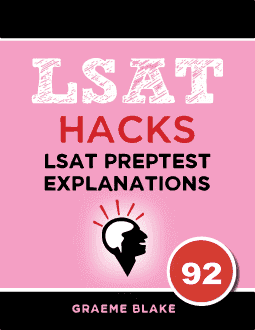QUESTION TEXT: Although the audience from part one of the television documentary…
QUESTION TYPE: Necessary Assumption
CONCLUSION: Most of the viewers who watched Train Stories on the first night liked it enough to watch again on the second night.
REASONING: The audience on the second night was not significantly smaller.
ANALYSIS: The author is inferring from the similar viewer numbers that the viewers from the first night was popular with viewers and they watched again. However, they are making an assumption. We don’t actually know that the audience was the same people both nights.
Remember the tried-and-true negation technique: the correct answer choice will, when negated, break the argument.
___________
- CORRECT. It’s entirely possible that there were train enthusiasts who could not watch the documentary on the first night but tuned in on the second. The negation confirms that this choice is correct.
Negation: Most of the viewers who tuned in on the second night did not watch on the first night. - The argument does not assume or claim anything about what the viewers thought about part two. It only notes that it was watched by a similarly-sized audience.
Negation: Most of the people tuning in on Friday did not like it. - Same as B. The author does not assume any quality comparison between the two nights, and what people thought of the second night is irrelevant.
- The author does not claim anything about why people didn’t watch on the second night. The argument is centred around those who did.
Negation: Many of the people who watched on Thursday but not Friday watched other programs - The author has not argued anything related to why people liked the documentary on the first night, nor what they like in general.
Recap: The question begins with “Although the audience from part one of the television documentary”. It is a Necessary Assumption question. Learn more about LSAT Necessary questions in our guide to LSAT Logical Reasoning question types.


Leave a Reply